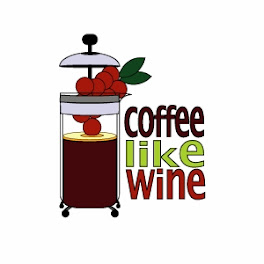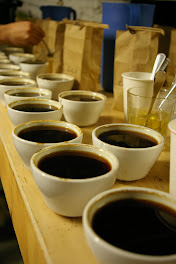
For Thanksgiving dinner, I brought two wines: Wildhurst 2005 Chardonnay Reserve (review) which I got at the BevMo 5 cent sale, and a red wine called Winfield Red from Winfield Winery in Cabot, Pennsylvania. I picked it up last year at the winery during Christmas when we were visiting family.
The Winfield Red is a dry "red wine blend." Not exactly sure what grapes were used to make this as it's not listed on the bottle or the website (there's no vintage year either, so it could be a NV). The winery bottles four separate single varietal dry reds, including Noiret, Cabernet Sauvignon, Cabernet Franc and Chambourcin, so I'm assuming the Winfield Red is some sort of combo of those.
I bought the bottle last December, and have been waiting for some reason to open it up, but never got around to it. I figured it would be good to open for Thanksgiving with family out here since I remembered it to be light, Pinot Noir-like wine.
My memory was right, I found cherries and stems on the nose, with a very light Beaujolais flavor in the mouth - sweet cherries on the attack and a tart green finish lacking tannins. It was enjoyable, and I think I paid less than $15 for it.
I was really impressed with another wine served at dinner, the Donovan-Parke 2007 Pinot Noir ($16.99 at BevMo and still under its 5 cent sale).

Not sure what I was getting on the nose, but the only way I could describe it in my notes was "Cheez-Its." It was savory, salty, and reminded me of cheese. Take that for what you will. In the mouth I found bing cherries, lots of black pepper on the midpalate - as if I had dipped my tounge in a pepper shaker, and a finish of sweet strawberries. I might be picking up a bottle or two of this wine to try again. I really enjoyed it.
I was talking to my girlfriend's grandfather, Jim, 90, who has a farm in Lodi where they grow a variety of things including my favorite, pomegranates. We started talking about wine, and he told me had grown Tokay grapes on his farm more than a decade ago, from 100-year old vines. What a tragedy, I thought, given that "old vine" wines can command a premium nowadays, especially since a lot of the very old vines were torn up during prohibition. He said he used to sell the grapes to Gallo, but the roots became infected with a fungus, and the government had outlawed a fungicide they used to kill it. So, they pulled up the vines. So sad.
I thought it was kind of bizarre that they had Tokay grapes, since my only reference to the name was for a sweet white wine grown in Hungary. But after some research, I found that the famous sweet white Hungarian wine is actually named after the town where it's from - Tokaj -and the grape varietal is actually Furmint. There's also Tokay d'Alsace (Pinot Gris) and Tocai, an Italian varietal grown in Friuli-Venezia Giulia region. All of these are different varieties.
So, while doing some further searching online for Tokay in Lodi, I saw that the varietal Jim probably grew is called Flame Tokay, which has been planted in Lodi since the turn of the 20th century (more background here). The variety is used both for table grapes and wine, as it has high sugar content and acidity, although it appears it has a "neutral" flavor that doesn't lend to high quality wine production.
I also found out that Lodi had a Tokay Carnival more than a century ago in 1907, which was an "elaborate three-day event that was officially Lodi’s first community-wide grape harvest celebration," according to the Lodi News-Sentinel. While that event was a one-time affair, the community did start to hold a Lodi Grape Festival every September since 1934 (with a five-year break during WWII). Now, most of the Flame Tokay production is gone, made way for more popular varieties. I didn't expect to learn much about wine during Thanksgiving dinner, but a simple conversation ended up teaching me about a part of California's wine history that I never knew about. So glad that happened.









1 comment:
The variety is used both for table grapes and wine, as it has high sugar content and acidity, although it appears it has a "neutral" flavor that doesn't lend to high quality wine production.
Post a Comment